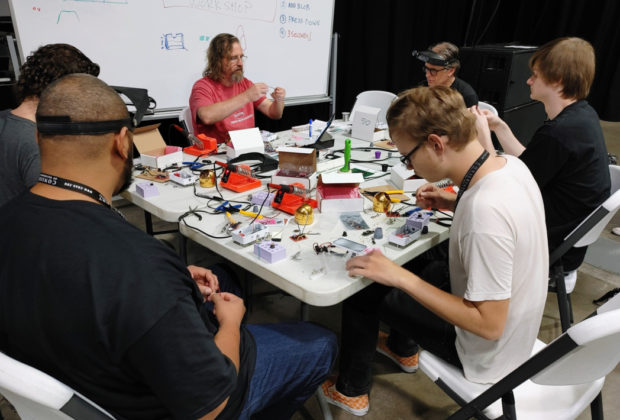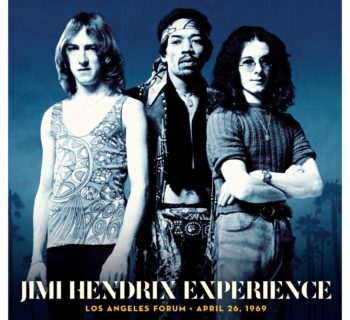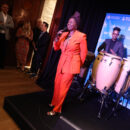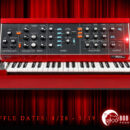The Conservatory of Recording Arts & Sciences (CRAS; www.cras.edu) has announced that it has once again partnered with Austin Ribbon Microphones for a DIY clinic for the school’s student section of the Audio Engineering Society. This time, the event was also a first as Rick Wilkinson and Bob Kostlan of Austin Ribbon Microphones, and Dave Royer of Royer Labs and Mojave Audio conducted not just a mic build, but guitar and bass pedal builds as well, during the Aug. 28-29 workshops. As always, the students keep what they build.
This unique opportunity is not lost on those attending the event. “Dang, I actually built this,” said CRAS student Beattie Therrell.
The first workshop included building the AustinDrive guitar pedal. The concept for this workshop was designed during a previous road trip to CRAS by Wilkinson and Kostlan, who is also a professor at San Diego City College. The AustinDrive pedal is a springboard into understanding the design and functions of guitar pedals and their components. CRAS students built the basic circuit board, then swapped-in and auditioned resistors, capacitors, diodes, and amplifier chips to design their own sound, guided by Wilkinson and Kostlan. Some students chose components to make overdrive pedals, others made distortion pedals, and several made bass fuzz pedals, simply by learning about, then installing and listening to different components included in the kits.
The following morning, Royer joined Austin Ribbon Microphones, students and faculty for a ribbon mic build. A true “Do It Yourself” build, students hammered and formed the screens, soldered the connectors, cut and corrugated the thin ribbon foil, and assembled the microphone body.
“I have produced sound design for Disney, Netflix, Hulu, Sony Pictures, HBO, and MTV, but none of it compares to the excitement of building my very first ribbon microphone from the ground up with the guidance of Rick Wilkinson,” said CRAS instructor Rick Allen. “I have decades of experience using ribbon mics, but I can honestly say after this build that I understand the science of a ribbon mic better than ever before.”
Austin Ribbon Microphones invents and manufactures educational DIY audio kits and soldering tools, and runs in-person and remote “virtual” workshops for guitar pedals, microphones and preamplifiers. Visit AustinMics.com and TheHotHolder.com
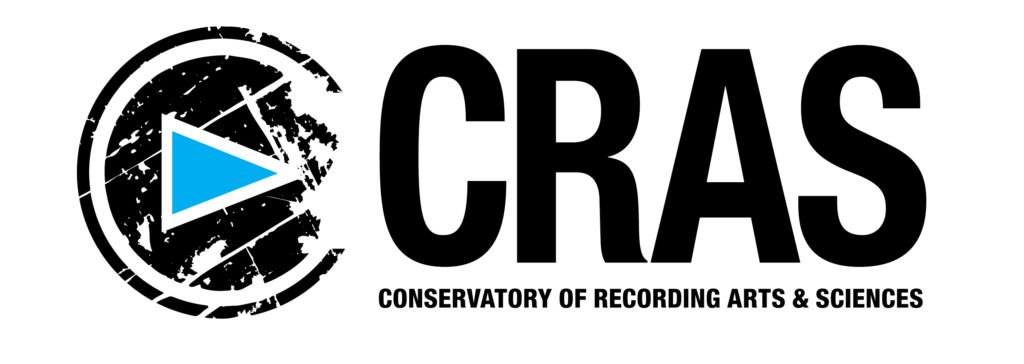
The Conservatory of Recording Arts & Sciences is composed of two nearby campuses in Gilbert and Tempe, Ariz. A CRAS education includes broadcast audio, live sound, film and TV audio, music, and video game audio, all taught by award-winning instructors who have all excelled in their individual fields, including sound reinforcement, audio recording and production, digital recording, troubleshooting/maintenance, and music business.
The 11-month program is designed to allow every student access to learn and train in all of the Conservatory’s studios which are comprised with state-of-the-art audio recording and mixing gear, the same equipment used in today’s finest studios and remote broadcast facilities, including Pro Tools Ultimate, API Legacy consoles, SSL AWS consoles, Studer Vista consoles, and much more. All students must complete a 280-hour industry internship to graduate from the Master Recording Program II that may ultimately lead to industry employment.
For more information on the Conservatory of Recording Arts & Sciences, visit www.cras.edu

